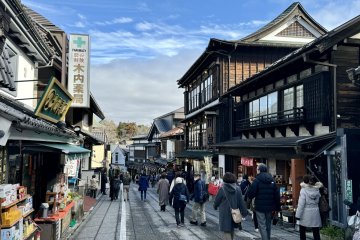If you are heading to Osaka, Kyoto, Nara, Nagoya, or Mie Prefecture, the Kintetsu Rail Pass can save you a lot of precious time and money.
The pass
The Kintetsu Rail Pass offers unlimited travel within designated areas in the Kansai region and includes special benefits at select facilities. It has one-day, two-day, and five-day options. The Kintetsu Rail Pass 1day and 2day options focus on travel in Osaka, Nara, and Kyoto, while the five-day pass covers Osaka, Nara, Kyoto, Nagoya, and Mie. For additional coverage, you can also purchase the five-day Kintetsu Rail Pass Plus. As of April 1, 2025, the Kintetsu Rail Pass is entirely digital.
Kintetsu Rail Pass price
Children under six years old travel for free.
| Pass Type | 1day | 2day | 5day | 5day plus |
| Adult (12+) | ¥1,900 | ¥3,700 | ¥4,900 | ¥6,700 |
| Child (6–11) | ¥950 | ¥1,850 | ¥2,450 | ¥3,350 |
Validity
The Kintetsu Rail Pass’s coverage depends on the type of pass. The pass durations correspond with the types (1day, 2day, etc.) and are only valid for consecutive days.
Coverage details/coverage restrictions:
| 1day | 2day | 5day | 5day plus | |
| Kintetsu Line | Between Osaka-Namba and Kintetsu-Nara; Kyoto and Tsutsui; Nagata and Ikoma; and Toriimae and Ikomasanjo | Unlimited travel in Osaka, Nara, and Kyoto Prefectures | Entire Kintetsu Line and the Iga Tetsudo Line | Entire Kintetsu Line and the Iga Tetsudo Line |
| Nara Kotsu bus | Nara Park, Nishinokyo, and Horyuji Temple areas | Nara Park, Nishinokyo, Horyuji Temple, Asuka, Muro, and Yamanobe-no-Michi areas | N/A | Nara Park, Nishinokyo, Horyuji Temple, Asuka, Muro, and Yamanobe-no-Michi areas |
| Mie Kotsu bus and Toba City 'Kamome' (seagull) Bus Lines | N/A | N/A | N/A | Review this website for coverage |
| Eligible facilities with benefits | Approx. 40 | Approx. 40 | Approx. 70 | Approx. 70 |
For information about coverage restrictions, please visit the official sites and review the Kintetsu Rail Pass maps.
- Kintetsu Rail pass 1day
- Kintetsu Rail pass 2day
- Kintetsu Rail pass 5day
- Kintetsu Rail pass 5day plus
As introduced above, the pass also offers special benefits at participating facilities. The benefits are only valid when the pass is active and can be used once per facility. The benefits largely include product and admission discounts and complimentary beverages. For more details, review the below lists.
Do I need it?
The Kintetsu Rail Pass can certainly be a cost-effective way to travel around the Kansai region, and with a digital pass, you do not need to worry about purchasing multiple tickets throughout your journey. In order to determine if the pass is right for you, review your desired destinations and determine if they fall within the coverage area. Add up the transportation costs and compare that sum to the pass price.
Purchase
The Kintetsu Rail Pass is only available to tourists visiting Japan with a “Temporary Visitor” status.
You can purchase the pass online through the Kintetsu Railway official website or at select travel agencies outside Japan.
Kintetsu recommends that you purchase one pass per device (i.e. phone). However, if your group does not have multiple devices, you can purchase up to four tickets per reservation.
Usage
The Kintetsu Pass is entirely digital and accessible via a web browser.
On the day you want to start using the pass, click the “Activate Tickets” button. When traveling on the Kintetsu train or cable car, you will need to use a QR code. Hold the code over the QR code reader at the ticket gates to enter and exit the train. If you are traveling on Iga Railways or buses or want to redeem facility benefits, bring up the corresponding digital pass on your device and show the image to a staff member.
Important notes:
- The QR code updates every five minutes. You must be connected to internet to use the pass
- You cannot use a screenshot of the QR code
Please review Kintetsu Railway’s “How to use the digital ticket” page for more information.
Destinations
Listed below are some exciting destinations you can visit with the Kintetsu Rail Pass.
Nagoya Castle (Nagoya; 5day passes only)
Nara Park (Nara; 1-5day pass okay)
Kiyomizu-dera Temple (Kyoto; 1-5day pass okay)
Kuromon (Osaka; 1-5day pass okay)
Meotoiwa (Mie; 5day passes only)









